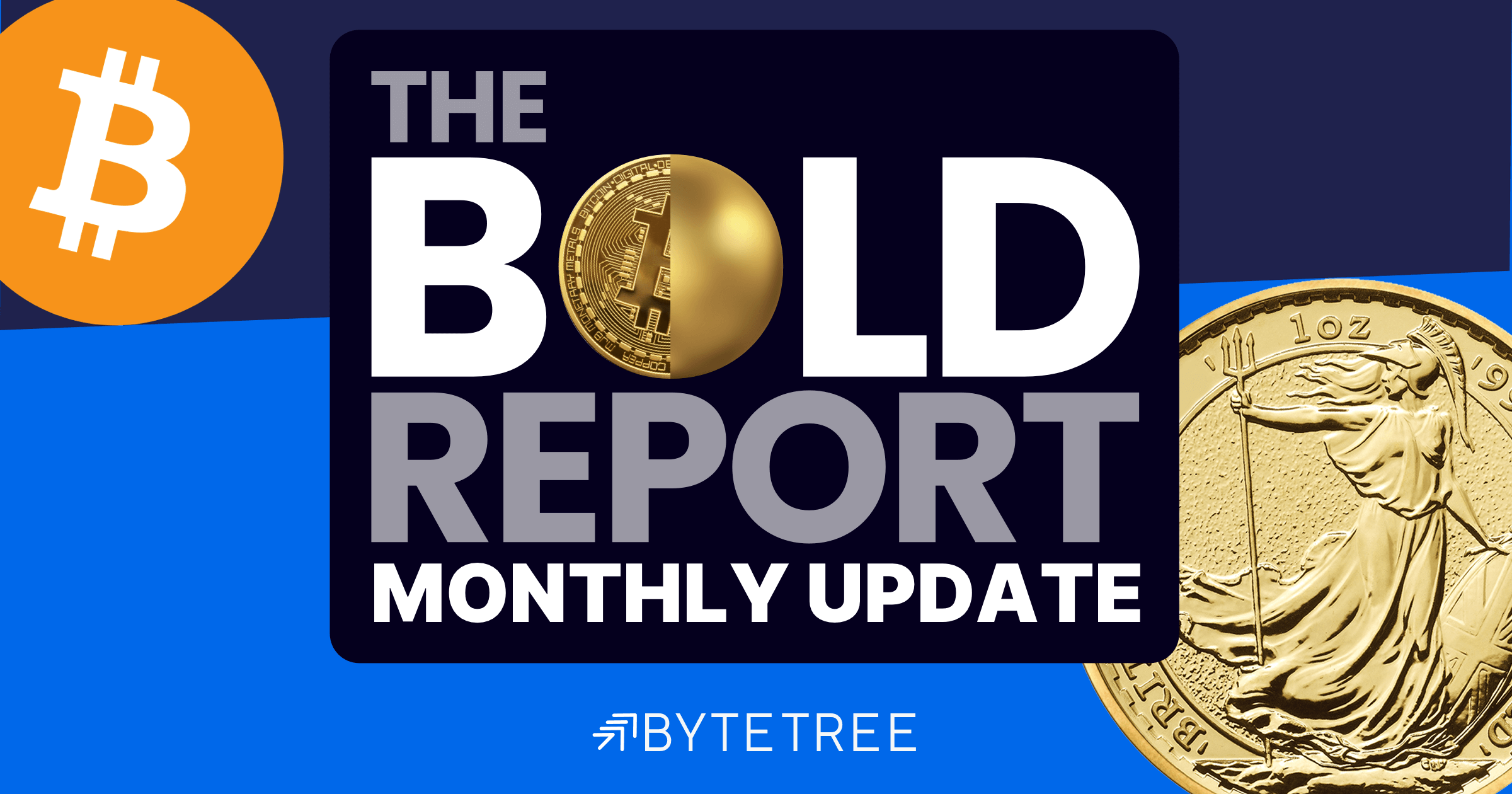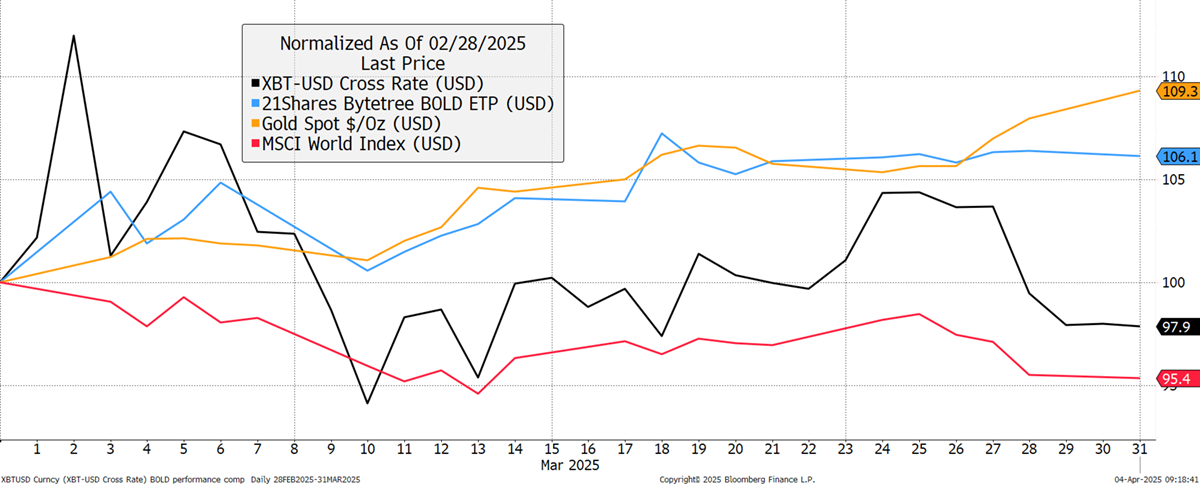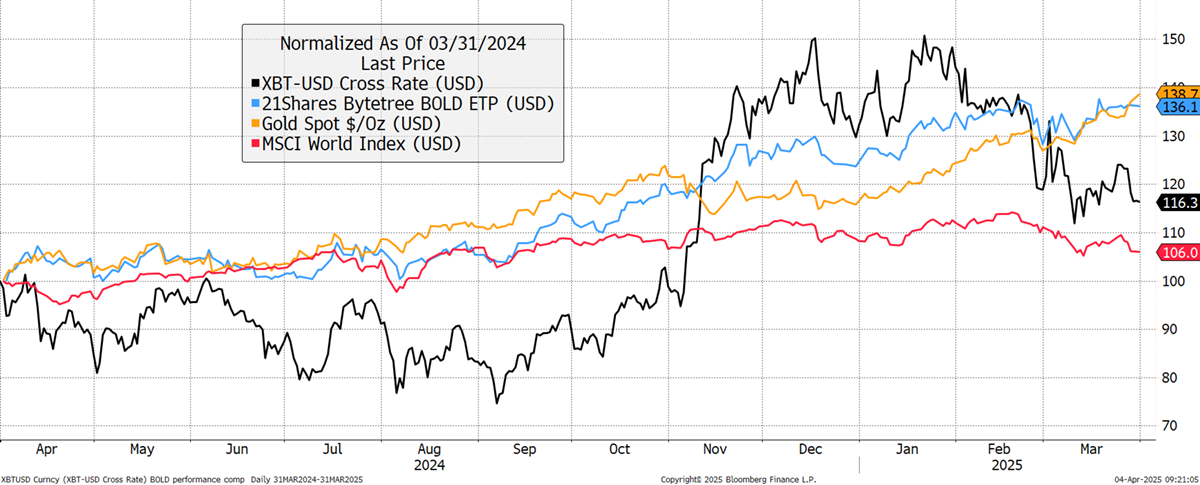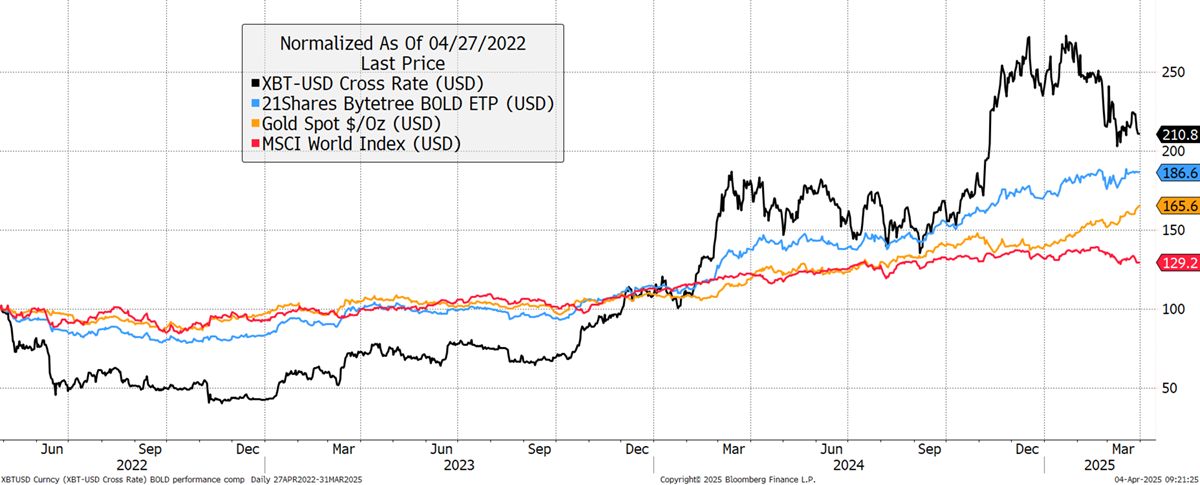Gold All-Time High

Disclaimer: Your capital is at risk. This is not investment advice.
ByteTree BOLD Index Monthly Rebalancing Report;
The 21Shares ByteTree BOLD ETP (BOLD) invests in Bitcoin and Gold. BOLD combines the world’s two most liquid alternative assets on a risk-adjusted basis. Due to their natural low correlation, the diversification benefits of holding both assets have been unusually high. Bitcoin prefers risk-on market conditions, while Gold prefers risk-off.
In March, BOLD rose by 6.1%, Bitcoin fell by 2.1%, and Gold rose by 9.3%, while global equities fell by 4.68% in USD terms.
The target weights last month were 25.5% and 74.5% (Bitcoin to Gold). Price changes over the month led to the last day’s weights at 23.8% Bitcoin and 76.2% Gold. This means the latest rebalancing has seen 1.9% added to Bitcoin and reduced from Gold to meet the new target weights.
Bitcoin, Gold, BOLD, and Equities in USD – March 2025

BOLD Performance
Over the past year, Bitcoin has returned +16.3%, in contrast to Gold, with a +38.7% gain, while equities have risen by +6.0%. BOLD has returned +36.1% in US dollars. Although slight, BOLD has nearly kept up with Gold and averted the correction in Bitcoin, demonstrating the benefits of a rebalancing strategy.
Bitcoin, Gold, BOLD, and Equities - Past Year

Since the 21Shares ByteTree BOLD ETP inception on 27th April 2022, Bitcoin has returned +110.8%, Gold is up +65.6%, and equities are up +29.2%. BOLD has returned +86.6%. A fixed 75/25 Gold/Bitcoin strategy would have returned 76.9%, once again demonstrating the power of rebalancing. That 9.7% outperformance comes after fees.
Bitcoin, Gold, BOLD, and Equities - Since Inception

Monthly Rebalancing of the BOLD ETP
BOLD allocates to Bitcoin and Gold on a risk-adjusted basis using past volatility, which is calculated using daily price movements. The less volatile asset, which has lower daily price moves, gets a higher weight in the index at the end of the monthly rebalancing.
